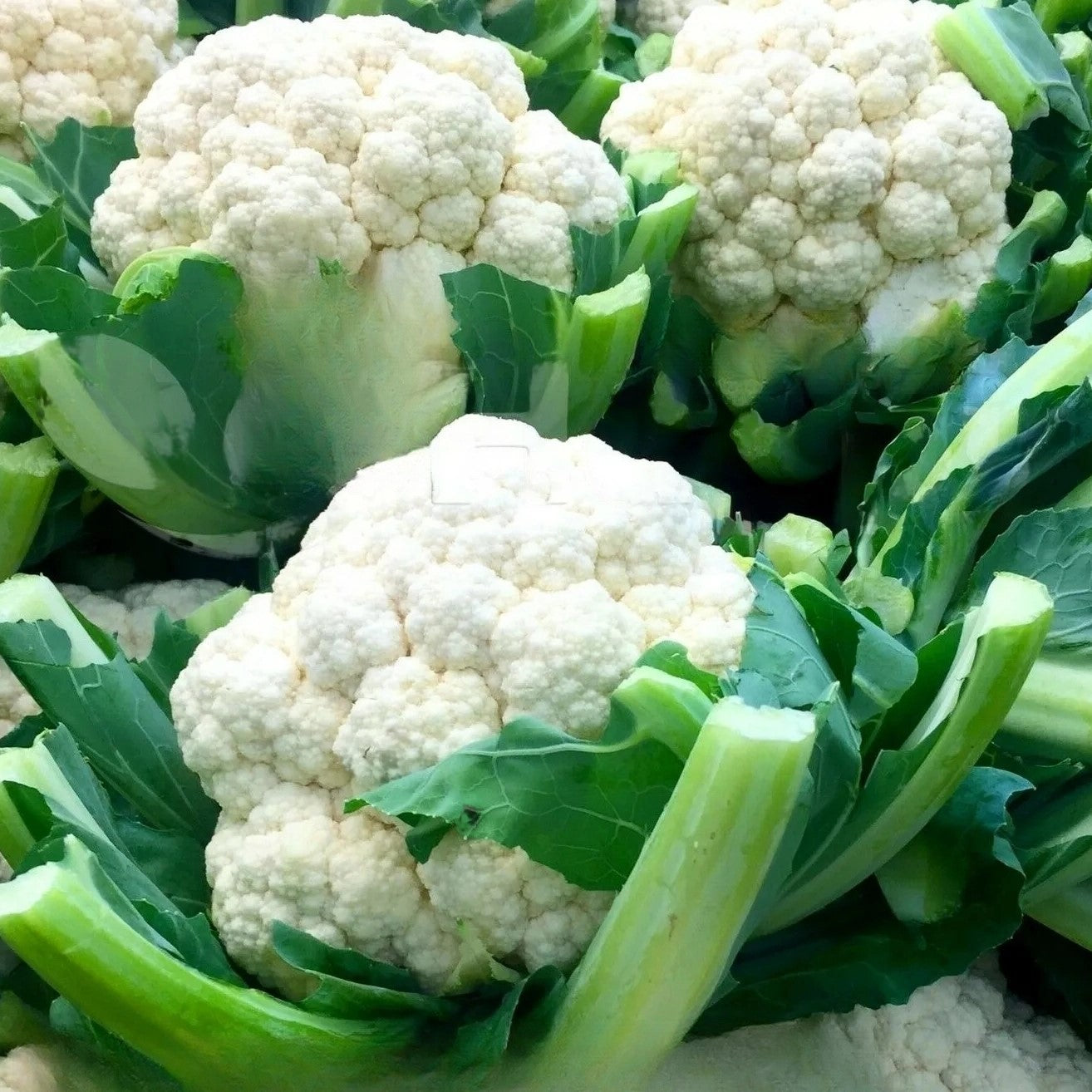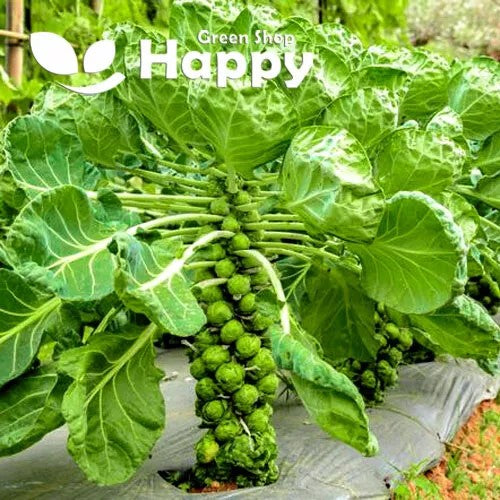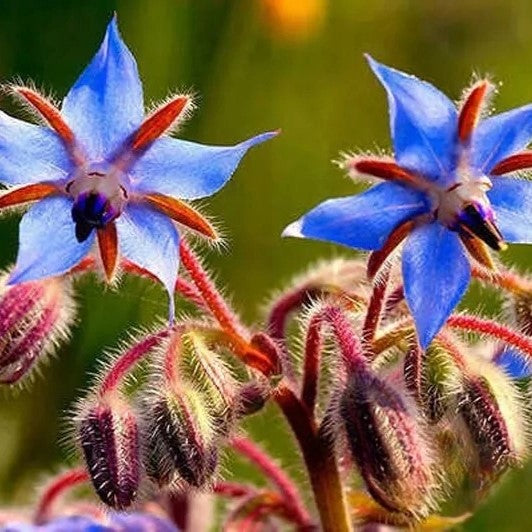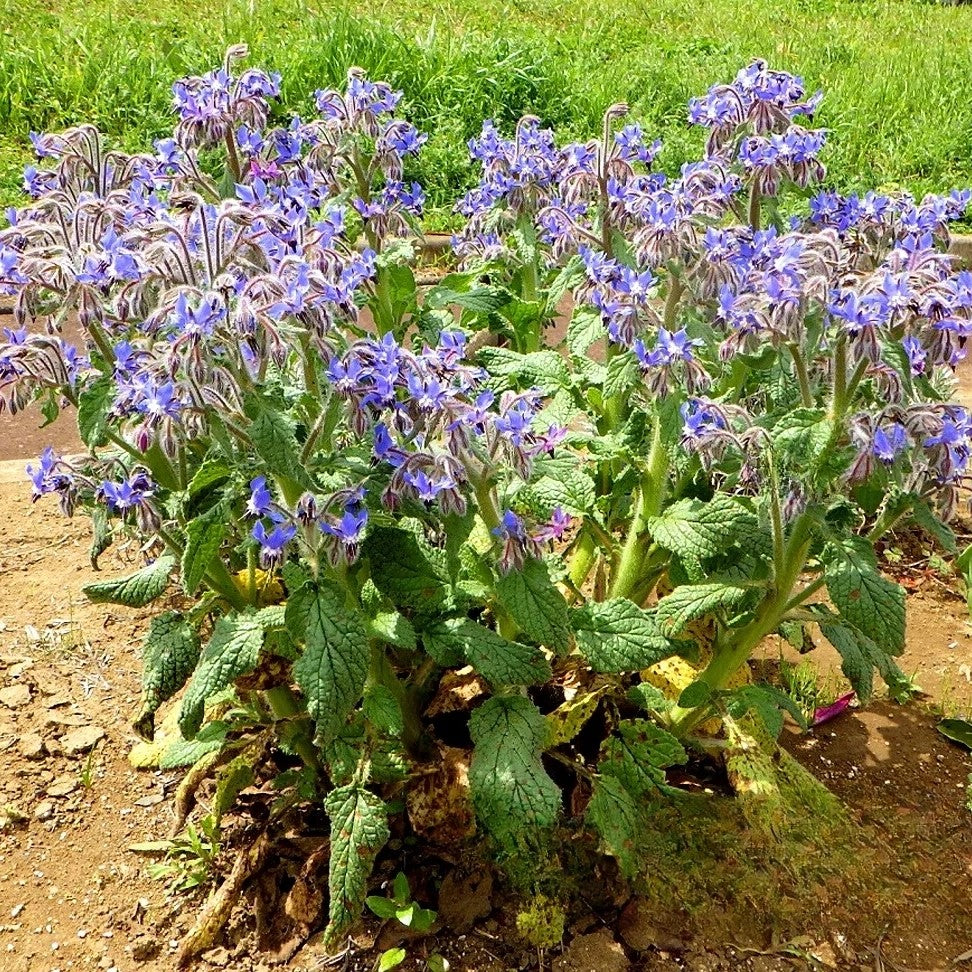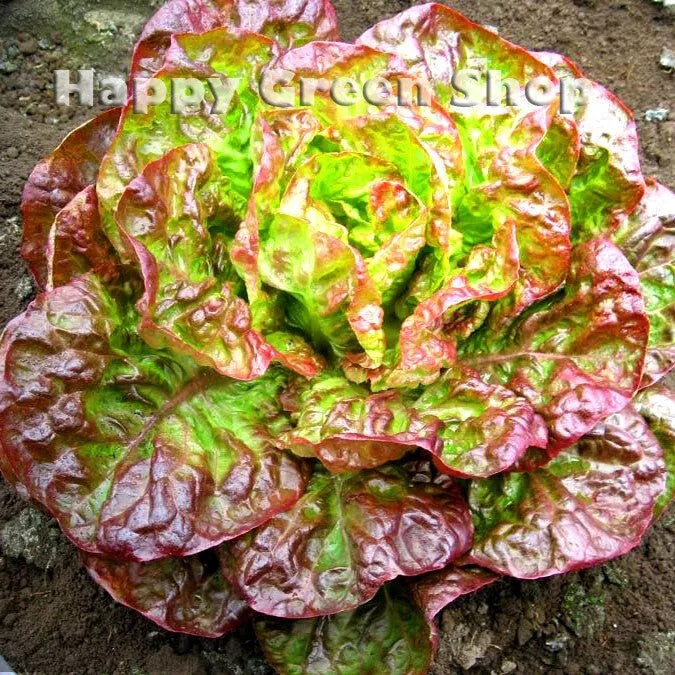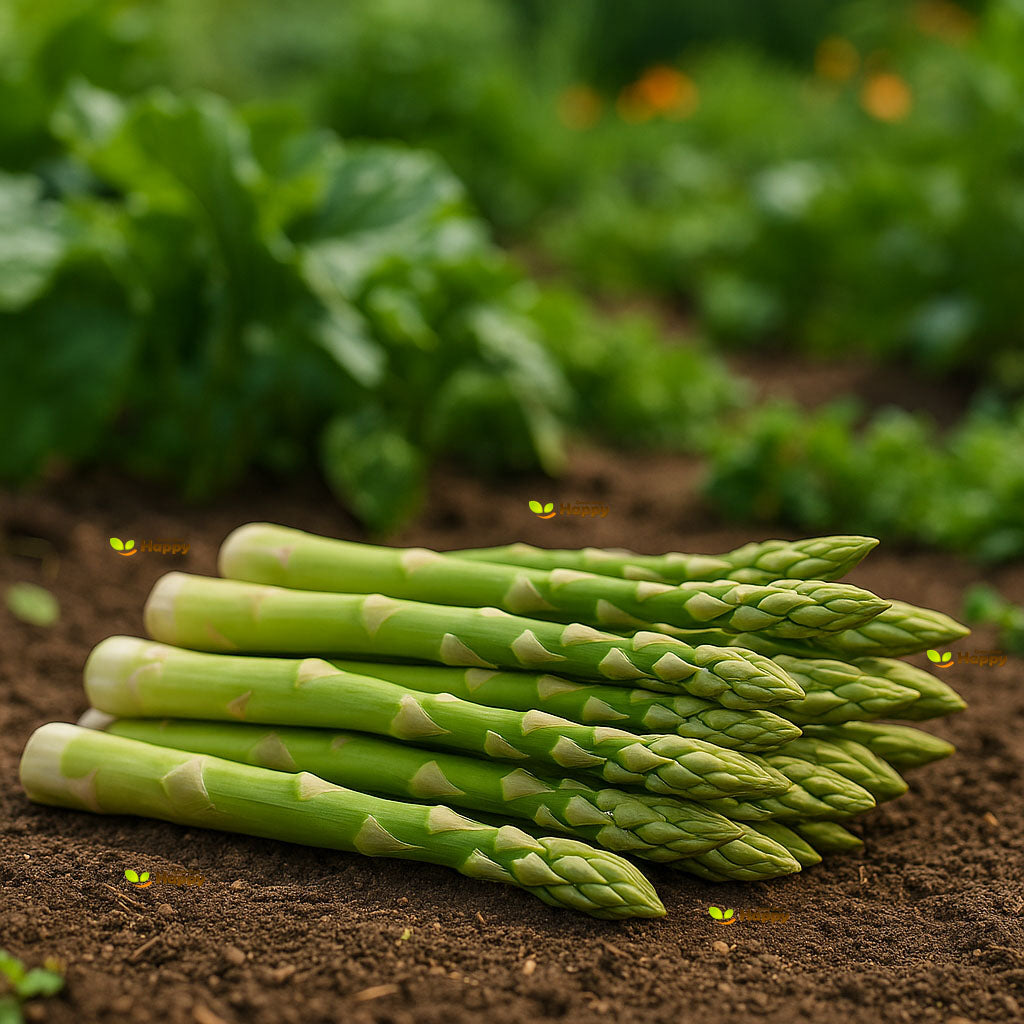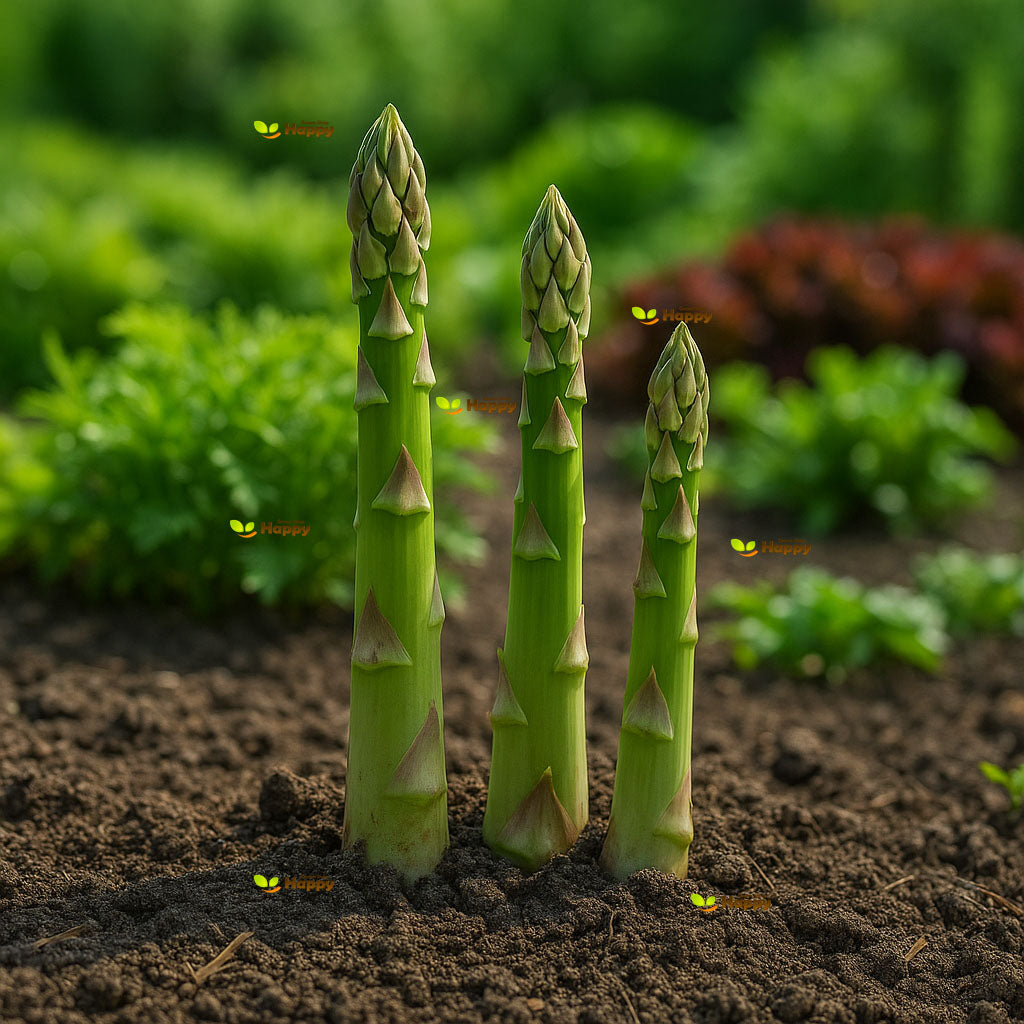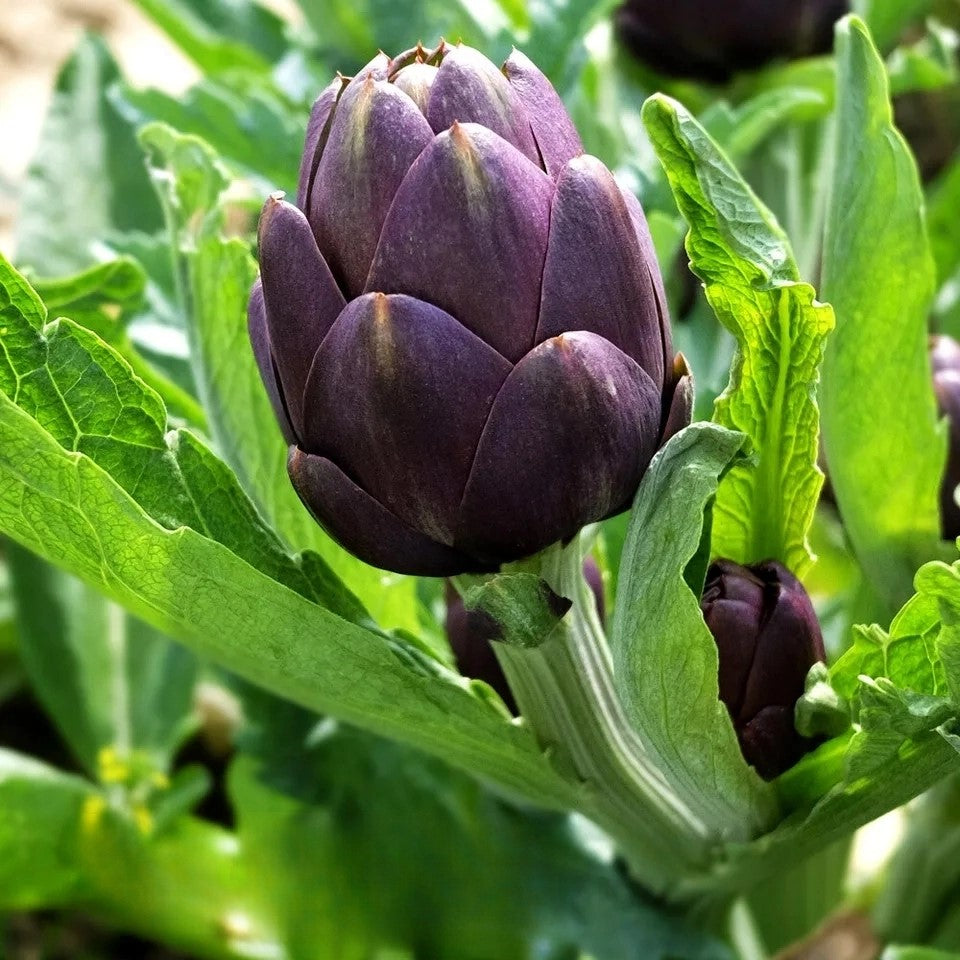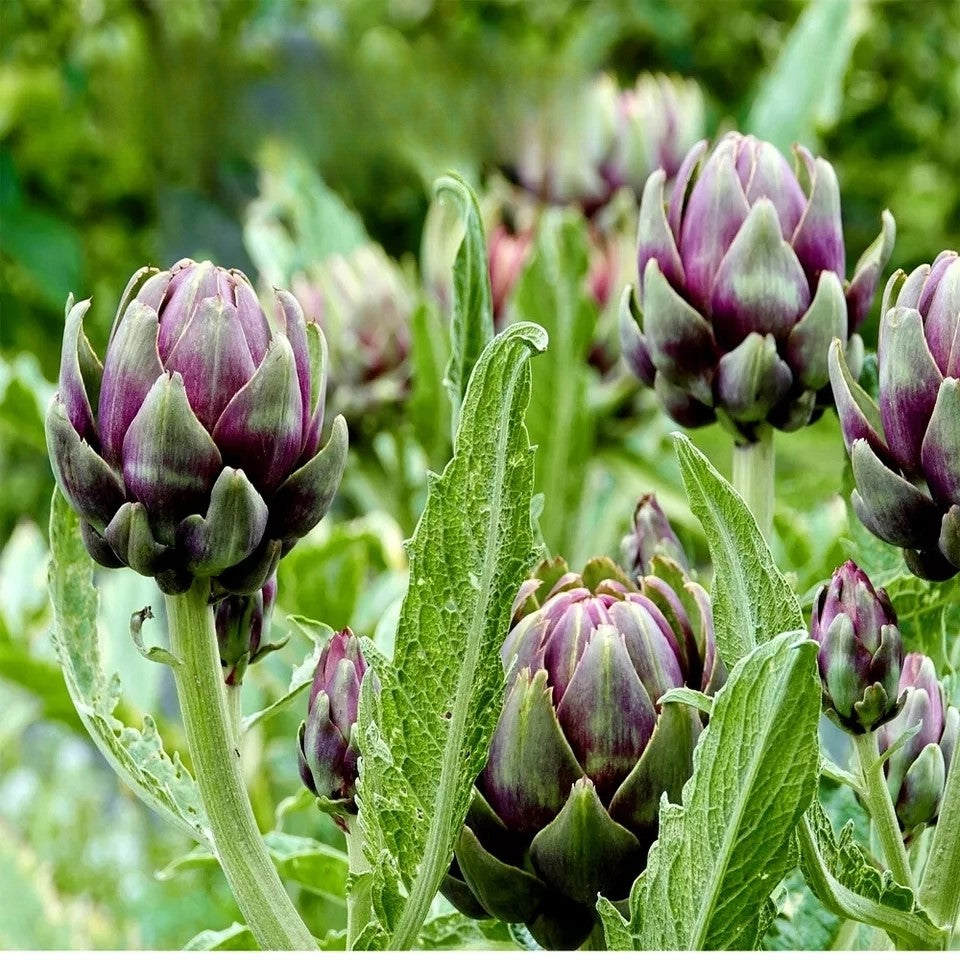Sort by:
52 products
52 products
Cauliflower 'Octavian' – Seeds (Brassica oleracea)
Cauliflower 'Octavian' is a reliable mid-season variety producing large, firm, creamy-white heads with a mild, delicate flavor. Ideal for steaming, roasting, soups, and gratins, it is a versatile addition to any vegetable garden.
This hardy variety performs well in a range of soils, offers excellent disease resistance, and is suitable for home gardens, allotments, and small-scale cultivation.
How to Grow
-
Sow indoors: February – April
-
Transplant outdoors: April – June
-
Depth: 0.5–1 cm
-
Spacing: 40–50 cm between plants, rows 60–70 cm apart
-
Position: Full sun, sheltered from strong winds
-
Soil: Fertile, well-drained, rich in organic matter
-
Watering: Keep soil consistently moist for optimal head development
Key Features
-
Mid-season cauliflower with large, firm, creamy-white heads
-
Mild, tender flavor suitable for steaming, roasting, soups, and gratins
-
High-yielding and reliable growth
-
Excellent disease resistance
-
Ideal for home gardens, allotments, and small-scale cultivation
Harvest
-
Harvesting period: July – September
-
Harvest heads when compact and firm to ensure the best flavor and texture.
Short Tip
Blanch the heads by folding outer leaves over them to maintain whiteness and protect from sunburn.
Brussel Sprout 'Casiopea' – Seeds (Brassica oleracea)
The Brussel Sprout 'Casiopea' is a high-yielding variety producing uniform, medium-sized sprouts with firm, dense heads and excellent flavor. Known for its reliable growth and resistance to bolting, it thrives in cooler weather, making it ideal for autumn and winter harvests. Perfect for roasting, steaming, or sautéing, this variety is a favorite for home gardens and allotments.
How to Grow
-
Sow seeds indoors from February to March or directly outdoors from March to April.
-
Plant 1–2 cm deep in trays or modules and transplant when seedlings are strong.
-
Space plants 50–60 cm apart in fertile, well-drained soil with full sun.
-
Support plants if needed, and maintain regular watering.
-
Harvest sprouts from the base upwards as they mature.
Key Features
-
High-yielding, uniform sprouts
-
Firm, dense heads with excellent flavor
-
Resistant to bolting and suited for cooler weather
-
Ideal for autumn and winter harvests
-
Versatile for roasting, steaming, and sautéing
Ideal For
-
Autumn and winter vegetable gardens
-
Roasting, steaming, or sautéing
-
Home gardeners seeking reliable, flavorful sprouts
Sowing & Harvest
-
Sow: February to April
-
Spacing: 50–60 cm between plants
-
Harvest: September to December
Quick Tip
-
For sweeter sprouts, leave them on the plant until after a light frost—it enhances flavor and texture.
Borage – Seeds
(Borago officinalis) – Edible Flowers & Pollinator Magnet
Borage, also known as the starflower, is a fast-growing annual herb admired for its vivid blue, star-shaped flowers and fuzzy, cucumber-flavored leaves. A favorite of bees, butterflies, and other pollinators, it makes an excellent addition to herb gardens, vegetable patches, or pollinator-friendly borders. Both flowers and young leaves are edible – perfect for garnishing salads, desserts, drinks, or freezing into ice cubes.
Key Features
-
Plant type: Annual herb
-
Height: 50–70 cm
-
Spread: 30–40 cm
-
Flowers: Bright blue, star-shaped
-
Foliage: Grey-green, hairy leaves with cucumber flavor
-
Position: Full sun to light shade
-
Soil: Moderately fertile, well-drained
Ideal For
-
Herb & cottage gardens
-
Attracting pollinators (especially bees)
-
Edible flowers & herbal teas
-
Companion planting with tomatoes, strawberries, and courgettes
Sowing & Growing
-
Sow outdoors: April–June, direct in soil, 1 cm deep.
-
Germination: 7–14 days.
-
Spacing: Thin to 30 cm apart.
-
Flowering: June–September.
Care Tips
-
Easy to grow and self-seeding – will naturalize readily.
-
Pinch back growing tips for bushier plants.
-
Collect flowers regularly to encourage continuous blooming.
-
Water in dry spells but avoid overwatering.
Batavian Lettuce 'Canasta' – Seeds (Lactuca sativa)
Enjoy crisp and tender leaves with Batavian Lettuce 'Canasta', a traditional variety known for its red-tinted, crinkled heads and excellent bolt resistance. This semi-heading lettuce produces large, crunchy leaves with a mild, sweet flavor, perfect for fresh salads or as a base for summer dishes. Hardy and versatile, 'Canasta' thrives even in warmer weather, making it a reliable choice for gardeners.
How to Grow
. Sow indoors from February to April or directly outdoors from March to July
. Sow thinly, 0.5 cm deep, in rows 25–30 cm apart
. Thin seedlings to 20–25 cm apart to allow full head development
. Prefers full sun and fertile, well-drained soil
. Water consistently to prevent bitterness and promote tender leaves
Key Features
. Traditional Batavian lettuce with semi-heading form
. Large, crisp leaves with red-tinged edges
. Mild, sweet flavor perfect for fresh salads
. Excellent bolt resistance in warm conditions
. Easy to grow and high yielding
Ideal For
. Summer salads and fresh eating
. Home gardens and allotments
. Gardeners seeking heat-tolerant lettuce
. Companion planting in vegetable beds
Sowing & Harvest
. Sow: February – July
. Harvest: May – September
Quick Tip
Harvest outer leaves regularly to encourage continuous growth, or allow full heads to form for a crunchy centerpiece lettuce.
Aubergine Eggplant ‘Black Beauty’ – 150 Seeds (Solanum melongena)
Description:
Grow classic, glossy eggplants with Aubergine ‘Black Beauty’ (Solanum melongena). This high-yielding variety produces large, dark purple fruits with tender flesh and mild flavor, perfect for grilling, roasting, or sautéing. Ideal for greenhouses, containers, and garden beds, ‘Black Beauty’ is easy to grow from seed and provides a long harvest throughout the summer. A favorite for home gardeners seeking versatile and productive eggplants.
Key Features
-
Large, glossy dark purple fruits
-
Mild, tender flesh suitable for a variety of dishes
-
High-yielding and long-harvesting variety
-
Easy to grow from seed
-
Ideal for greenhouses, containers, and garden beds
Ideal For
-
Kitchen and home vegetable gardens
-
Containers, raised beds, and greenhouse cultivation
-
Culinary use: grilling, roasting, sautéing
-
Home gardeners seeking productive eggplants
Sowing & Growing
-
Sow Indoors: February–April
-
Transplant Outdoors: May–June, after frost
-
Germination: 7–14 days at 20–25°C
-
Spacing: 50–60 cm apart
-
Support: Optional staking for heavy fruits
-
Light: Full sun
-
Soil: Fertile, well-drained, rich in organic matter
Care Tips
-
Water consistently, keeping soil evenly moist
-
Fertilize every 2–3 weeks with balanced fertilizer
-
Mulch to retain moisture and control weeds
-
Harvest when fruits are fully glossy and firm
Asparagus ‘Mary Washington’ – 60 Seeds (Asparagus officinalis)
Description:
Grow a classic, long-lived perennial vegetable with Asparagus ‘Mary Washington’ (Asparagus officinalis). This heirloom variety is renowned for its high yields of tender, flavorful green spears with slightly purple tips. Ideal for home gardens and allotments, it produces abundant harvests year after year once established. Easy to grow from seed, ‘Mary Washington’ is disease-resistant and perfect for gardeners seeking a reliable, low-maintenance perennial crop.
Key Features
-
Heirloom variety producing tender green spears
-
Long-lived perennial with high yields
-
Excellent flavor and texture
-
Disease-resistant and reliable
-
Easy to grow from seed
Ideal For
-
Home and kitchen gardens
-
Allotments and perennial vegetable beds
-
Sustainable, long-term food production
-
Gardeners seeking low-maintenance crops
Sowing & Growing
-
Sow Indoors: February–April
-
Transplant Outdoors: May–June
-
Germination: 14–21 days at 20–25°C
-
Spacing: 30–45 cm apart in rows 1 m apart
-
Light: Full sun
-
Soil: Deep, fertile, well-drained
Care Tips
-
Do not harvest in the first year to allow plants to establish
-
Keep soil moist but not waterlogged
-
Mulch to retain moisture and suppress weeds
-
Harvest spears in spring from the second or third year
Artichoke ‘Violet de Provence’ – Seeds
(Cynara cardunculus) – Perennial Globe Artichoke
The ‘Violet de Provence’ is a classic French heirloom artichoke renowned for its beautiful purple-tinged flower heads and gourmet flavor. This perennial vegetable produces compact, tender buds that can be harvested young as a delicacy or left to bloom into striking thistle-like flowers for the pollinators. Hardy and long-lived, it is both ornamental and productive, making it a superb choice for kitchen gardens and edible landscapes.
Key Features
-
Type: Perennial vegetable
-
Heads: Purple-tinged, compact, tender
-
Flavor: Rich, nutty, gourmet quality
-
Height: 120–150 cm
-
Position: Full sun, sheltered spot
-
Soil: Deep, fertile, well-drained
Ideal For
-
Gourmet vegetable gardens
-
Edible landscaping and ornamental borders
-
Cutting gardens (flowers can be dried)
-
Mediterranean-style gardening
Sowing & Growing
-
Sow indoors: February–April, in pots or trays.
-
Plant out: May, after the last frost, spacing 90–100 cm apart.
-
Harvest: From the second year, June–August.
Care Tips
-
Mulch well to retain soil moisture.
-
Remove side shoots for larger main heads.
-
Protect crowns in winter with straw or fleece in colder climates.
Showing 52/52


